Digging Deep in Alabama: Your Ultimate Guide to Gem Mining
Whether you’re a seasoned collector or a beginner with an interest in geology, the thrill of unearthing a sparkling gemstone is unparalleled. Alabama, known as the “Heart of Dixie,” offers a wealth of hidden geological treasures under its fertile soil. This article is your guide to the rich gem mining opportunities in Alabama, the types of gems you can find, and tips to make your gem-hunting experience unforgettable.
The Most Popular Gemstones in Alabama
With a broad variety of precious and semi-precious gems nestled beneath its soil, the state is a haven for enthusiastic explorers and professional gemologists alike. Let’s take a closer look at some of the most common and rare gemstones you could encounter in Alabama:
Rare Gemstones in Alabama:
| Gemstone | Description |
| Tourmaline | Though not as common as other gems, tourmaline can be found in Alabama. This gem comes in a variety of colors, the most common being black. Colored tourmaline is quite rare and is highly sought after by collectors. |
| Beryl | Beryl in its pure form is colorless and often mistaken for quartz. However, impurities give rise to varieties of beryl like emerald (green) and aquamarine (blue), which are rarely found in Alabama. |
| Gold | Gold is considered a rare find in Alabama. The state had a minor gold rush in the 1830s, and while commercial operations have ceased, recreational prospectors still occasionally stumble upon nuggets or flakes. |
| Rutile | Rutile, a mineral used in the manufacture of titanium, is found in Alabama. While it’s not typically considered a gemstone, its needle-like inclusions can create the star effect in gems like the star blue quartz, making it noteworthy. |
Common Gemstones in Alabama:
| Gemstone | Description |
| Star Blue Quartz | Unique to Alabama, Star Blue Quartz is known for its distinct blue color and asterism (star-like effect). Its captivating color ranges from light to medium blue and the star effect is caused by inclusions of rutile. |
| Garnet | Garnets are plentiful in Alabama and are typically found in a deep red color. Known for their durability, garnets were historically used as abrasives but are now primarily used for jewelry. |
| Quartz | Apart from the unique star blue quartz, Alabama is home to abundant quantities of regular quartz. It is often found in its clear form but can also occur in shades of purple (amethyst), yellow (citrine), or pink (rose quartz). |
| Mica | While not a gemstone, mica is a mineral that’s commonly found in Alabama. It forms in layers and is known for its shiny appearance and flexible sheets. |
| Hematite | Hematite, also known as Alabama’s state mineral, is a common find. This iron oxide mineral is known for its metallic grey-to-black color and was historically significant to the state’s economy. |
| Calcite | Calcite is a versatile mineral found in Alabama, known for its diverse forms and colors. It’s often used for educational purposes as it exhibits double refraction, meaning it can bend light into two separate rays. |
| Pyrite | Also known as “Fool’s Gold,” Pyrite is a common mineral found in Alabama. Its metallic luster and yellow hue often have it mistaken for gold. |
| Dolomite | Alabama is home to large deposits of Dolomite, a mineral closely related to limestone and very common in the state’s sedimentary rock. While not typically used in jewelry, it plays a significant role in industry and agriculture. |
Remember, while some of these minerals might not be conventionally classified as gemstones, they are still significant and fascinating finds for rock hounds and mineral enthusiasts.
Top Gem Mining Locations in Alabama
Alabama boasts a plethora of gem mining locations that are not only productive but also accessible for enthusiasts of all ages and levels of experience. Here are some of the top spots you can venture to for a chance to unearth the gemstone treasures of the Heart of Dixie:
- Hogg Mine (LaGrange, Troup County): Hogg Mine is renowned for its star rose quartz, black tourmaline, and beryl. It’s a privately owned mine that offers public digs, with dig dates listed on their website.
- Alabama Gold Camp (Cragford, Clay County): Although most popular for gold, this site is also abundant in garnets, citrine, and other quartz varieties. They offer equipment rental and camping facilities for a fulfilling mining getaway.
- Coosa County Prospecting Site (Coosa County): Known for its varied garnets, this spot is a favorite among recreational prospectors. Prospecting is allowed during daylight hours, and there’s no admission fee.
- Spectra Gems (Wagarville, Washington County): Spectra Gems offers a gem mine teeming with garnets, quartz, and other semi-precious stones. Visits are by appointment only.
- Benson Mines (Lincoln, Talladega County): Open to the public for rockhounding, Benson Mines is known for its variety of quartz, including rose quartz and smoky quartz. It’s best to visit during daylight hours for safety reasons.
- Goldville Mine (Goldville, Tallapoosa County): Although primarily known for gold, the Goldville Mine also holds quartz and garnets. Mining is allowed for a small fee, and it’s recommended to call ahead to confirm operating hours.
- Minooka Park (Jemison, Chilton County): This location is known for its clear quartz crystals. The park also offers other recreational activities, making it a perfect family outing spot.
- Talladega National Forest (Talladega County): While not a mining site per se, the forest is a known area for prospecting quartz and garnets. Always remember to follow national forest guidelines and regulations when prospecting.
- Bailey’s Pebble Pit (Jacksonville, Calhoun County): This site is home to a variety of semi-precious stones including agate, jasper, and quartz varieties. Call ahead to confirm operating hours.
- Rikard’s Mill Historical Park (Beatrice, Monroe County): This historical park is known for its fossils rather than gemstones, but it’s a great location for those interested in geology. You might find fossilized shark teeth and shells here.
Remember to check for the latest updates on regulations and operating hours for these locations before planning your visit. Enjoy the thrill of the hunt!
History of Gem Mining in Alabama
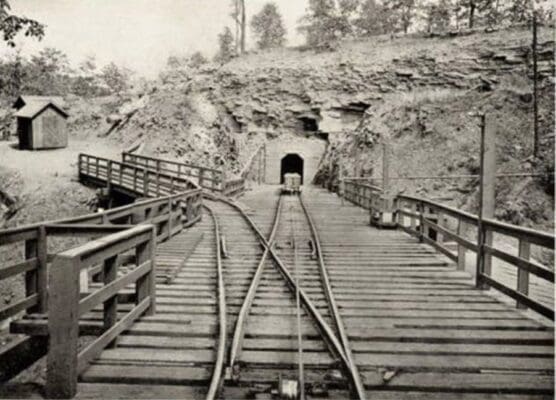
Mining in Alabama has roots extending over 200 years back, painting a vivid history that’s as diverse as the minerals found within the state’s borders. Initially, the state’s mining industry was focused heavily on gold. Locations like Goldville, in Tallapoosa County, thrived during the Gold Rush of the early 19th century. Goldville District’s population swelled with over 14,000 miners at its height, who while pursuing gold, unearthed a variety of gemstones such as garnets and quartz.
The narrative of Alabama’s mining industry began to shift as its geological diversity unveiled a broader palette of mineral resources. Alabama’s geology is a mosaic of metamorphic rocks like schist and gneiss, as well as sedimentary rocks like limestone and shale. This diverse geological composition has given birth to a variety of precious and semi-precious stones.
One pivotal discovery that turned the tide for Alabama’s gem mining industry was the uncovering of star blue quartz in the early 20th century. This unique gemstone, distinguished by its enchanting blue hue and asterism (a star-like pattern seen under particular lighting conditions), is a rare find in many places outside Alabama. This led to a surge in interest from both amateur and professional gem hunters.
The emergence of star blue quartz triggered a wave of recreational gem hunting in Alabama. Mines across the state opened their gates to the public, offering the thrill of hunting for personal treasures. Destinations like Hogg Mine and Alabama Gold Camp soon became go-to spots for gem enthusiasts.
The burgeoning popularity of gem hunting in Alabama led to the inception of events such as the “Gem, Mineral & Jewelry Show” by the Alabama Mineral & Lapidary Society. These events provide a platform for enthusiasts to delve deeper into Alabama’s gem mining history, marvel at the diversity of the state’s mineral resources, and become a part of Alabama’s rich culture of gem mining.
From its origins in gold mining to the discovery of unique gemstones like star blue quartz, Alabama’s history of gem mining continues to fascinate. It attracts a steady stream of locals and visitors eager to partake in the state’s vibrant culture of gem hunting.
Gem Mining Regulations in Alabama
When embarking on a gem-hunting adventure in Alabama, understanding the local gem mining regulations is crucial. It’s vital to note that the rules vary depending on whether the land is privately owned or public, and they can change over time due to shifts in state policy or environmental concerns.
The majority of the gem mining locations in Alabama are privately owned. This means that permission from the landowner is required before any mining activities can take place. Some sites allow public access for a fee and may even provide additional services like tours, equipment rentals, and facilities. Sites like Hogg Mine, Alabama Gold Camp, and Spectra Gems are examples of private properties that offer public gem hunting for a fee. Before you visit, it’s recommended to contact the site directly or visit their website for the most accurate and up-to-date information on their operating hours, fees, and regulations.
On the other hand, some gem-hunting opportunities exist on public lands in Alabama. For example, areas within the Talladega National Forest are known for their quartz and garnet deposits. Public lands are managed by federal or state agencies, and their regulations often reflect a balance between recreational opportunities and the conservation of natural resources. It’s important to familiarize yourself with these rules to ensure you’re mining responsibly and legally. For instance, collecting small amounts of rocks and minerals for personal use is typically allowed, but commercial collection or use of machinery might be prohibited. Additionally, permits may be required for certain activities or locations.
Regardless of whether you’re prospecting on private or public land, there are general guidelines that gem hunters should follow. First and foremost, respect the land. This means following the Leave No Trace principles: don’t leave trash behind, don’t create new paths or disturb vegetation, and don’t disturb wildlife.
Secondly, safety is paramount. Always wear appropriate clothing and protective gear, be mindful of potential hazards like loose rocks or steep cliffs, and never go gem hunting alone in remote areas.
Lastly, while gem hunting, it’s important to respect the rights of others. This includes not trespassing on private property without permission and respecting the rules and regulations of public lands.
Necessary Tools and Equipment for Gem Mining in Alabama
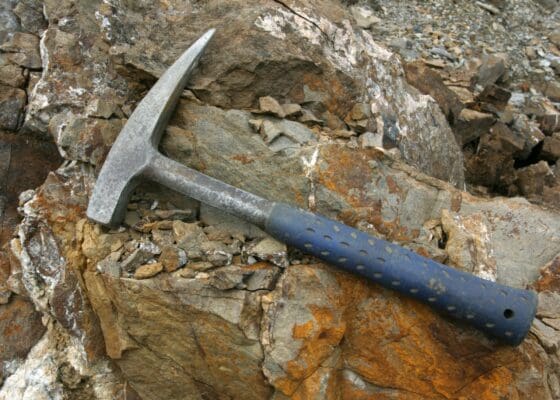
Embarking on a gem hunting adventure in Alabama is exciting, but going prepared with the right equipment is crucial. The tools you’ll need may vary depending on the specific mining site and the type of gemstones you’re after. Here’s a list of some essential tools and their purposes:
1. Screening and Classifying Tools: Reveal those hidden treasures!
Description: Used to sift through dirt and gravel to reveal gemstones. Screens with different mesh sizes can be used for different stages of sifting.

🛒 Explore Top Screening Sets on Amazon
2. Shovels and Trowels: Digging deep or just scratching the surface?
Description: This is a fundamental tool for digging into the earth. Shovels come in different sizes; a larger one is perfect for moving large amounts of soil, while a small handheld shovel or trowel is ideal for delicate extraction work.

🛒 Find Quality Shovels and Trowels on Amazon
3. Picks and Hammers: This tool can be useful for breaking into hard rock surfaces or loosening compacted soil.
Description: A rock hammer, with its flat and pointed ends, is invaluable for breaking apart rock formations and exposing hidden gems. A pick can assist in harder terrains, helping to dislodge rocks or create an entry point.

🛒 Check Out Best Picks and Hammers on Amazon
4. Buckets: Your trusted companion for carrying treasures.
Description: An essential for carrying your finds and moving soil and gravel around. Some miners prefer to have multiple buckets for sorting and storing different types of rocks and gemstones.
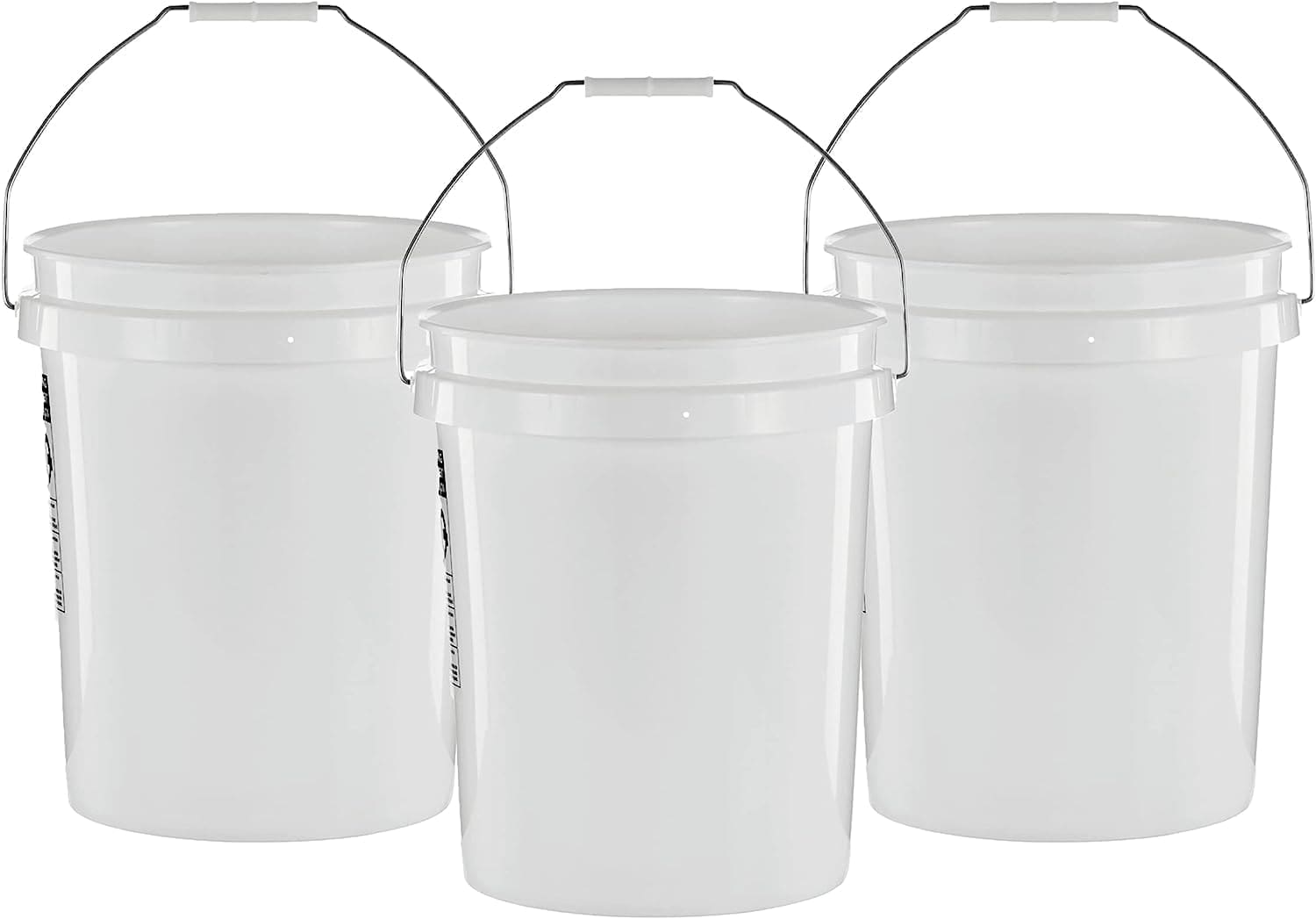
🛒 Shop for Reliable Buckets on Amazon
5. Magnifying Glass: To get a closer look at your finds and help identify potential gemstones.
Description: Some gems or minerals can be quite small or require closer examination to determine their value. A good magnifying glass or jeweler’s loupe provides this clarity.

🛒 Grab Your Magnifying Glass on Amazon
6. Guidebooks and Field Guides: A guidebook to gems and minerals can be very useful for identifying your finds..
Description: Especially for beginners, having a pocket-sized guidebook to gemstones common in Alabama can be immensely helpful. These guides offer visual references and descriptions, aiding in the identification of your finds.

🛒 Discover the Best Field Guides on Amazon
7. Containers and Bags: Organize, store, and flaunt your finds.
Description: As you gather gemstones, having durable bags or buckets ensures safe storage. Labeling them based on location or type of stone can be helpful for post-trip analysis.

🛒 Shop for Storage Solutions on Amazon
8. First Aid Kit: Better safe than sorry!
Description: Mining can pose some safety risks, so always carry a basic first aid kit for treating minor injuries.

🛒 Secure Your First Aid Kit on Amazon
Remember, if you’re missing any tools or equipment, most gem mining locations in Alabama offer rental or purchase options. However, it’s always best to check with the site directly to confirm what they provide and what you’ll need to bring with you.
Tips and Tricks for Successful Gem Mining in Alabama

Gem mining is an exciting hobby, but to ensure you have a successful trip, there are several tips and tricks you should keep in mind:
- Research the Area: Before heading out, research the gem mining location. Understand what types of gems are found there, what equipment is needed, and the best techniques to find those gems.
- Check the Weather: Weather conditions can greatly affect your gem-hunting experience. Dry days are typically best for digging in the dirt, while rainy days can wash fresh layers of soil and possibly uncover new gems.
- Start Early: Many gem sites can get crowded later in the day. Starting early not only gives you a better choice of spots to dig but also increases the chances of finding gems before others do.
- Be Patient and Persistent: Gem hunting requires a bit of patience and perseverance. Not every rock or handful of dirt will yield a gem but don’t get discouraged. Keep digging, keep searching, and your effort might just pay off.
- Get Dirty: Don’t be afraid to get your hands (and knees, and clothes…) dirty. Often, the best finds come from digging deep and thoroughly sifting through the soil.
- Bring Comfort Items: Staying comfortable can prolong your mining trip. Consider bringing items like a folding chair, plenty of water, snacks, and sun protection.
- Practice Responsible Mining: Respect the environment by following the ‘Leave No Trace principles. Don’t leave any litter behind, don’t damage the landscape, and respect any plants and wildlife in the area.
- Cleaning Your Finds: After your mining adventure, clean your finds carefully with water. For more stubborn dirt, use a soft brush. This will help to reveal the true colors and features of your gemstones.
- Learn to Identify Gems: The more you learn about different gemstones, the better you’ll become at identifying potential finds. Consider investing in a good gem identification book and always carry it with you.
- Consider Hiring a Guide: If you’re new to gem hunting, consider hiring a guide for your first few trips. They can provide invaluable advice and tips specific to the location and help you identify potential gems.
Remember, the key to successful gem mining is preparation, patience, and respect for the environment.
Handling Your Gemstone Finds
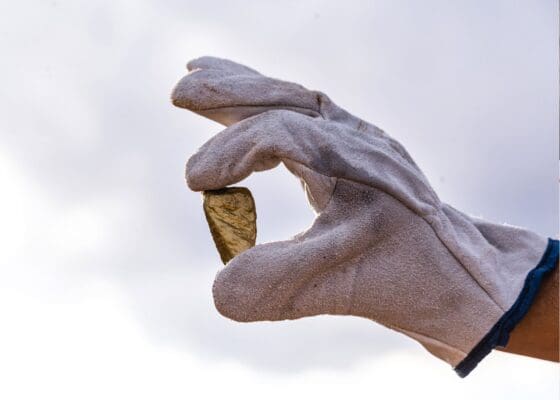
Discovering gemstones while mining is undoubtedly thrilling. However, what you do post-discovery can make all the difference in preserving the value and beauty of your finds.
To begin with, gemstones must be cleaned correctly. Most gemstones can be cleaned with warm soapy water and a soft brush. Be gentle, especially with softer stones, as excessive scrubbing may damage them. Rinse thoroughly under warm water to remove any soap residue. It’s best to air dry your gemstones, as cloth drying can lead to static electricity that attracts dust.
When storing your gemstones, it’s important to prevent them from scratching each other. Wrap each gem individually in a soft cloth or place them in separate compartments in a jewelry box. For particularly valuable or rare gems, consider investing in a padded gemstone case.
Moreover, one of the most exciting aspects of gem mining is discovering what you’ve found. For identification, consider investing in a field guide to gems and minerals. This can help you make initial identifications. However, for more accurate identification, especially for potentially valuable finds, consider consulting a local gemologist or jeweler. They have the expertise and equipment to provide precise information about your gemstones.
For those looking to cash in on their finds, getting your gemstones appraised is the next step. Keep in mind that the value of a gemstone is determined by its size, color, quality, and rarity. It’s best to have appraisals done by a certified gemologist to ensure accuracy.
If you’re looking to keep your gems as souvenirs, they make excellent ornaments. Consider displaying them in a glass case or having them made into jewelry. This way, you can show off your gem-hunting success while preserving your finds.
Finally, remember to keep a record of where and when you found each gemstone. These details add to the narrative and potentially the value of your findings. It also serves as a fun memory of your gem-hunting experience in Alabama.
Famous Gemstone Finds in Alabama
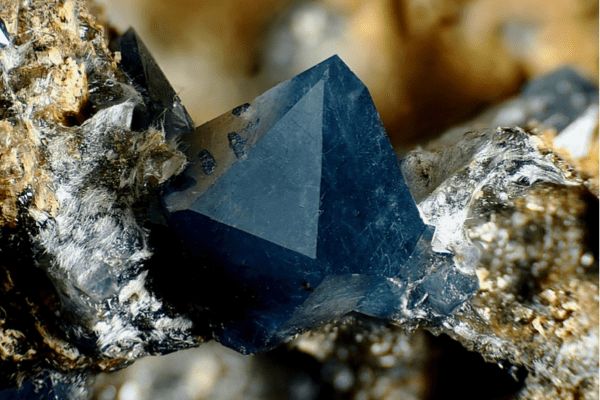
The state of Alabama has a history rich in geological wonder and gemological discoveries. One gemstone discovery, in particular, has cemented Alabama’s reputation as a prime location for gem hunting: the star blue quartz.
Star blue quartz, a unique and rare gemstone, has been a prominent symbol of Alabama’s gemstone wealth. This gem is known for its striking blue color and the star-like effect, or asterism, seen under specific lighting conditions. The asterism, a phenomenon rare in gemstones, is due to the reflection or transmission of light by parallel bundles of tiny rutile needles present within the stone.
The discovery of star blue quartz was more than just an exciting find; it was a turning point for the state. The distinctive asterism caught the attention of gemologists and enthusiasts worldwide, marking Alabama as a hotspot for gem mining. This find triggered a minor boom in the local gem mining industry and brought a wave of tourism to the state, with people eager to try their luck in Alabama’s gem-filled soils.
Furthermore, Alabama’s star blue quartz has made its way into various exhibits and private collections, earning accolades for its unique beauty. Some specimens are held in museums as a testament to the state’s rich geological history, while others have been fashioned into jewelry, flaunting Alabama’s natural treasures in a wearable form.
Even today, the allure of discovering star blue quartz continues to draw gem hunters to Alabama, from seasoned professionals to recreational diggers. This famous find is a shining example of the extraordinary gemstone potential residing beneath Alabama’s surface, enticing gem enthusiasts to unearth their own piece of Alabama’s geological history.
Additional Gem Mining Opportunities in Neighboring States
While Alabama offers an impressive array of gem mining opportunities, it’s not the only state in the region with such mineral riches. If you’re looking to extend your gem-hunting adventures beyond Alabama’s borders, consider exploring the following neighboring states known for their gemstone diversity:
- Georgia Gem Mining: Known for its abundance of amethyst, Georgia is a haven for quartz enthusiasts. The state also boasts deposits of garnets, rubies, and sapphires.
- Florida Gem Mining: While most popular for its beach treasures, such as shells and shark teeth, Florida also hosts deposits of agatized coral and fossilized sea life.
- Mississippi Gem Mining: Mississippi is home to petrified wood and agate, making it a unique destination for gem hunting.
- Tennessee Gem Mining: Tennessee is renowned for its beautiful freshwater pearls and agate. The state’s diverse geological makeup also includes deposits of fluorite and calcite.
- Kentucky Gem Mining: Primarily known for its impressive agate deposits, Kentucky also offers opportunities for finding fluorite and calcite.
Remember, each of these states has its own regulations regarding gem hunting, so it’s important to research and follow all rules and guidelines to ensure a successful and legal mining experience.
If you’re interested in learning more about locations and tips for successful gem mining, check out our comprehensive guide on Gem Mining Near Me.
Conclusion: The Adventure of Gem Mining At Your Fingertips
Exploring Alabama’s diverse gemstones is indeed an exciting adventure. However, not everyone can take the time to traverse the terrains and engage in the physical process of mining. Constraints such as time, distance, and even weather can pose challenges.
For this reason, we’ve created the Home Gem Mining Kit. This kit encapsulates the thrilling experience of gem hunting, delivering it right to your doorstep. With gem-rich soil sourced from Alabama’s productive mines and the essential tools for sifting included, you can now indulge in the joy of discovery from your own home.
Experience the satisfaction of uncovering hidden gems and the thrill of adding new treasures to your collection, all without the hassles of travel. Our Home Gem Mining Kit offers a unique, enjoyable gem hunting adventure for all ages. It’s gem hunting made easy, accessible, and convenient for everyone.


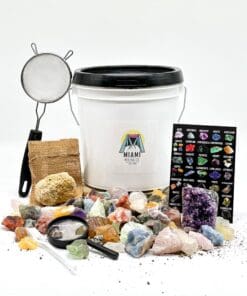
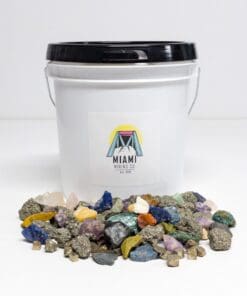
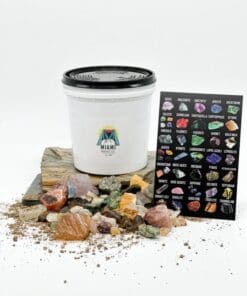
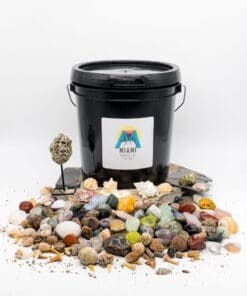
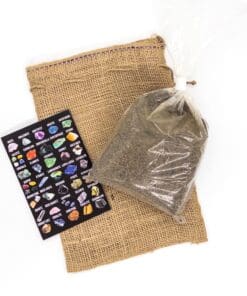
Welcome
Thank you so much for your warm welcome! I’m thrilled to share the excitement and adventure of gem mining in Alabama with you. Whether you’re a seasoned gem hunter or new to the hobby, Alabama’s rich geological sites offer a treasure trove of opportunities. Have you had any gem mining experiences in Alabama, or are there specific locations you’re curious about? I’d love to hear about your interests or answer any questions you might have as we explore the fascinating world of gem mining together!